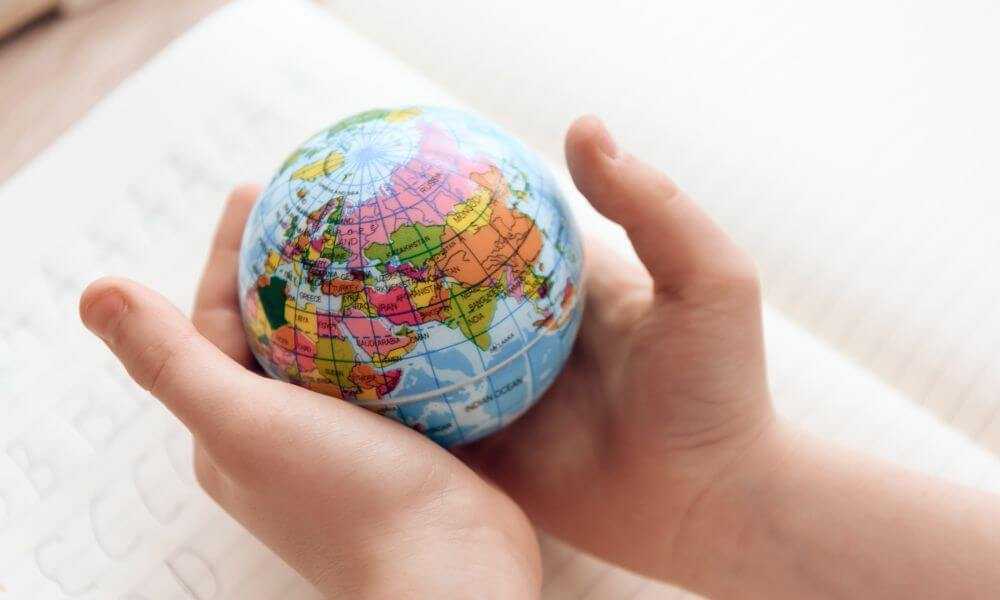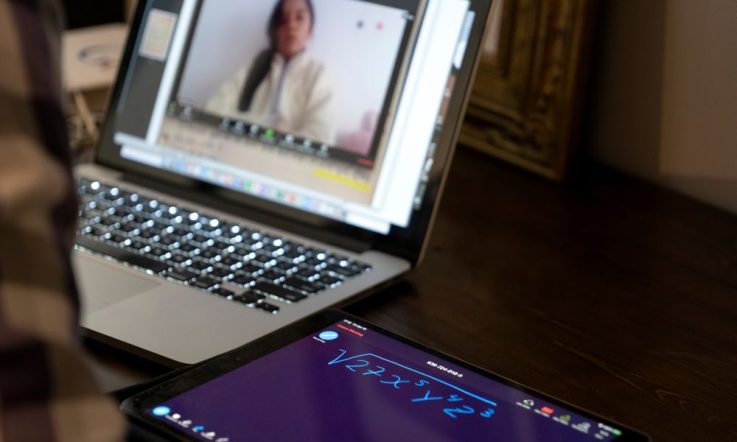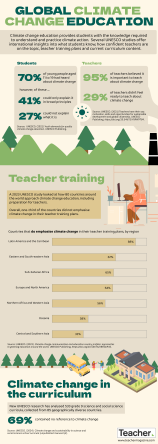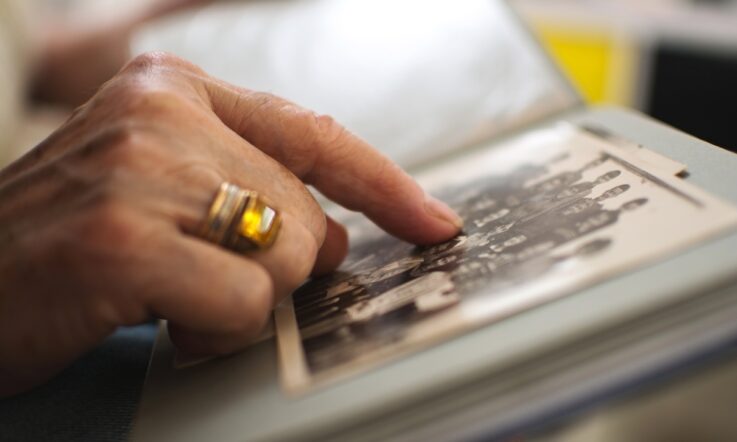This podcast from Teacher is supported by Sora, the student reading platform that provides access to curriculum and popular digital books for schools. Learn more at discoverSora.com/global.
Thanks for tuning into this podcast from Teacher. I’m Dominique Russell.
In the classroom, how can we go about enacting global citizenship? What might it look like when you’re starting out with your students? What does it look like when it’s being done well?
A new Global Citizenship Education Monitoring Toolkit has been released to explore and answer these questions. Developed in partnership by ACER and UNESCO Asia-Pacific Centre of Education for International Understanding (or APCEIU, as we’ll call it from hereon), the toolkit is designed for use by teachers, school leaders and education systems.
Today, ACER Senior Research Fellow, Rachel Parker, joins us to take us through the 4-phase inquiry-based learning cycle that is the central mechanism of the toolkit, how teachers and school leaders can use it, and also share some background on how the toolkit was developed. Let’s jump straight in.
Dominique Russell: Rachel Parker, thanks for joining us on the Teacher podcast. Today we're going to be learning about that ACER-APCEIU Global Citizenship Education Monitoring Toolkit, but before we get into the details of the toolkit, I thought it would be great if you could give listeners a bit of a broad idea of what the toolkit actually is.
Rachel Parker: Thanks Dom. It's great to be here. I'm very excited to talk about the Global Citizenship Education Monitoring Toolkit.
In a very literal sense, it's a comprehensive guide. It comprises of around 6 sections and it was designed for key education stakeholders – and by that we mean teachers, school leaders and education system leaders – and it includes the definitions for global citizenship, the definitions for global citizenship education, and also has lots of practical activities for those stakeholders to explore, plan, enact and monitor global citizenship education in their classroom, school, or system.
So, what we wanted to do was create a flexible and adaptive definition of global citizenship and a way for stakeholders to evaluate. It's a user guide and those sections for the stakeholders enable them to enact global citizenship in the ways that they need. And it's built around an inquiry cycle. And that acknowledges that change is not a one done, it's a cyclical process.
DR: And we're going get into the inquiry model in the bulk of our conversation, but if we take one step back to give us a little bit more context before we get into the detail of it, can you tell me a little bit about how the toolkit was actually developed and who was involved in that process/who was consulted?
RP: Before I do that, can I tell you about why it was needed?
DR: Absolutely.
RP: Great. Thank you. So, why do why do we need a global citizenship education monitoring toolkit? Well, it was designed to address a number of gaps. So, we know there are no shortage of statements in education policy online about the need for global citizenship education – that is, the need for social and environmental justice education. There are definitions by Oxfam, there's one that we created (ACER created) for the Southeast Asia Primary Learning Metrics, which defines a global citizen as someone who is ‘aware of and appreciates the interconnectedness of all life on the planet. They act and relate to others with this understanding to make the world more peaceful, just safe, and sustainable place’.
So, we know how to create a definition for global citizenship and that includes having the description of the types of skills, the values and the knowledge of a global citizen, but what we lack is taking this into practice. So, basically turning ideals into implementation. You know, there are lots of curriculum guides, descriptions of topics (global citizenship topics), but this implies that you can take this and apply it in your setting, and we know that's very difficult for education stakeholders to do.
So, what we've done is aimed to answer the questions about how to enact global citizenship and what does it look like when you do it well? So, what might it look like when you're starting out? What might look like when you're further down the path? And what might it look like in, say, upper primary? And the reason this is important, also, is because in this space of describing and defining global citizenship, there are lots of misconceptions about it. So, a lot of people feel that it's for highly resourced systems, for high-achieving students, even that it's a new area for learning. And also, that it's secondary to the core business of literacy and numeracy education. But we can walk and chew gum, you know, we know we can learn these essential skills through the lens of global citizenship. And, actually, anyone can be passionate about it.
And thinking about, in our Australian context, for example, many global citizenship topics and ideas are thousands of years old. For example, Indigenous Australians – their care for country and seeing country as kin or family is exemplified in the way that they manage land and sea to preserve and protect these ecosystems. So, this knowledge has been inherited from ancestors and ancestral beings for over 60,000 years.
So, an interested stakeholder can be anyone. It could be a teacher, it could be an education minister or school leader, the catalyst for change can actually come from anywhere or any country – it doesn't start with one group, for example, teachers or system leaders. And an example of this that we know from our work in low-income countries and developing countries, is the Minister for Education in Cambodia is a Rhodes Scholar of Ocean Law and Policy and a supporter of global citizenship education. And this particularly relates to his area of interest which is environmental science and ocean biodiversity. So, this is a really rich global citizenship area with many interconnected themes. And so, our toolkit provides a step-by-step guide for anyone who can enact their vision for global citizenship no matter where they sit in the system.
DR: And so let’s talk now about how the toolkit was actually developed.
RP: So, the toolkit was a culmination of 3 years’ research which we conducted in consultation with partners in Australia, the Philippines, Laos and South Korea. And we were very lucky to receive a generous grant from our own organisation, the Australian Council for Educational Research, as part of the Strategic Research Board grants. And also UNESCO-APCEIU, which is the Asia Pacific Centre for Education for International Understanding, supported and were co-authors and co-producers of our all of the outputs that we produced under the project. Also, the Department of Foreign Affairs Australia’s GEM Centre provided support for the first phase of the project.
So, how we developed this was – it was a pretty exhaustive process. And what we wanted to know initially was, what does good practice in global citizenship look like? So, the first thing we did was taken in-depth look and a broad look at a lot of literature, including assessments and studies that measure capabilities or skills related to global citizenship. And we came up with a set of enabling factors – so, the things that support good practice. And we embedded those across our research, and we used them to guide us in terms of what we wanted to end up with, which was the toolkit.
We asked teachers, school leaders and system leaders from the 4 countries a series of questions through workshops and surveys about how they defined, how they enacted and assessed global citizenship, and the kinds of things that helped and hindered them. And we also asked them about the supports that they received at each level. And what we consistently found was that these stakeholders talked about the need for resources to help them realise their global citizenship goals and plans. So, there was a real need for a kind of toolkit that mapped out ‘where do I fit?’ and ‘what are the next steps that I need to take in terms of taking forward my plan to enact global citizenship education in my context?’
After the break, we’ll hear more about the dynamic 4-phase inquiry-based learning cycle that the toolkit uses as the central mechanism for Global Citizenship Education. But first, here’s a quick message from today’s sponsor.
You’re listening to a podcast from Teacher magazine, supported by Sora, the student reading platform that provides every student with access to the right books. Sora offers your school’s curriculum titles, along with popular leisure titles available digitally anytime, anywhere. Visit discoversora.com/global today to learn why Sora is a worldwide leader for digital ebooks and audiobooks for students.
DR: And so, let’s look at this inquiry-based learning cycle in a little more detail now. It's got 4 phases to it, and so I thought it would be great if we could go through phase by phase and have a really deep understanding about what's going on in each phase. So, perhaps you can share with our listeners some practical suggestions as well on how these phrases can be used by teachers and leaders. The first phase that we're going to look at is discovery and goal setting. So, can you tell me a bit about what looked at during this phase?
RP: Sure. So, the first phase is really that phase of any kind of project or inquiry where you're discovering. So, it's about taking stock. Where are we now? What do we know? And, where to next? And the output of this step is to establish a goal. So, through this exploration and investigation (and sometimes in research we call it ‘establishing a baseline’) it's about getting that starting point for comparison.
So, there’s sort of 4 themes that emerge in our toolkit when it comes to the first phase. It's about knowing yourself (so, checking in with yourself) and that helps you understand whether your goal is realistic and achievable in your context. So, you might ask questions like, ‘what do I know?’ and ‘what can I do?’ And in our toolkit, we have some activities for the school leaders, teachers and education system leaders, and these include: identifying which topics, skills, and aspects of global citizenship you know; seeing yourself as a learner (which, for many people, is a challenge – so, actually identifying what don't I know about this topic and how can I find out about it?)
Another key piece – and we have this theme integrated across the entire toolkit – because it embodies global citizenship, and we're very keen to walk the talk, which is how to involve learners in all of the aspects of the toolkit. So, how do we involve them in the discovery process? One of the activities in terms of involving learners in the discovery process involves a KWL chart – which, K is know, W is want to know and L is learned. So, you would map out the first 2 letters of the chart in the first part of the process, and then after implementation, you describe what you've learned. So, it's a way of bringing that learning to the fore, recording what you've learned and how you've learned it. It also includes ways to mind map and a compass point activity.
DR: And so, the second is designing and developing a plan. Can you tell us a bit about that?
KP: Sure. So, once you have a goal or destination in mind, the second part of the toolkit is about developing a plan. So, at this point we ask ourselves: ‘what will we actually do?’ and ‘what will success look like?’ And part of developing a plan for a teacher or a school leader might be looking at ways in which you can integrate global citizenship topics across the curriculum. So, this might be looking at, say, where there are opportunities to foster global citizenship skills, like empathy, in subject areas like English or Geography or Mathematics – and what we know from the work that's done previously are there are many opportunities for global citizenship topics across all learning areas and it's a really rich area to actually introduce project-based learning that connects learning areas.
So, if you choose a theme for example related to environmental issues affecting your community, you can deepen understanding about this topic by including incursions, excursions, special speakers coming into classrooms, or having students interview people and gather information first-hand, which is really a great way to enrich and embed learning.
Another part of the second part of the developing a plan process is preparing for challenge. And this is key and it's something we might overlook in our planning process (and we've seen this in other projects) is, if you take the time to map out together what you anticipate the challenges to be, you're much more likely to be able to overcome them when they appear. So, this is really important for global citizenship planning, because for some schools and teachers it is a new area for teaching and learning and there will likely be challenges. So, mapping those out – and our toolkit involves some potential problems and some potential solutions for readers to engage with – you are much more likely to overcome them.
And again, as I said in the previous section, we have strategies to involve learners in this second planning phase. And it includes encouraging buy-in. So, by explaining to learners why we're learning XYZ and providing success criteria in their language so students can evaluate their own progress. And also, at the sort of highest level of deeper learning, developing their own inquiry project.
DR: And so then we move on to implementation and evidence gathering.
KP: So, the third part of the toolkit which we've mapped out all the key stakeholder groups is about implementing your plan. But, at the same time – and it's really important we mention that it does occur simultaneously – is evidence gathering. Because a lot of time in our planning, whether that's research projects or education, we implement and then we evaluate subsequently, but in this case, and in good practice, we would do those things simultaneously.
At the end of this phase, you'll have completed your unit or lessons, and you should have evidence for using the next step that you can evaluate your efforts. In our toolkit we emphasise the importance of having multiple forms of evidence – and a colleague of mine, Dr Amy Berry, who was a big contributor to this toolkit, she has actually conducted a course on formative evaluation, and she mentions the detective analogy. So, detective doesn't just use one piece of evidence to make their case, they use multiple forms of evidence. And so should teachers and other stakeholders. So, this part of the toolkit includes activities for teachers to gather evidence, what these methods are good for, and examples of them (for example, exit tickets or performance tasks). And it also includes information about the timing of evidence so sometimes there's confusion about when to administer tests, when to administer formative assessment/ summative assessments and how students can be involved in these processes.
DR: And the fourth and final phase is reflecting and evaluating.
RP: That's right. The last step is about using the evidence you've collected in step 3 to answer the questions: What was the impact? And to what extent was it successful? At the end of this step should have a clearer idea of the next steps for yourself and your learners as you prepare for the next cycle. And going back to what I said earlier, this process is not a one and done, it’s a continuous cyclical cycle of improvement.
The final chapter includes some guidance for reflection/reflective activities. And we know that reflection is not a standard practice for all teachers – some teachers might be more experienced in reflection as a continual process as part of their teaching and learning, others are much newer to the process. So, in our toolkit, in that final chapter, we've included some guidance on reflective practice such as reflection in action. So, that involves the pivoting and understanding in real time that you might need to change course. Reflection on action – so, that's reflecting on the actions that you've taken after the process. And also, reflection for action – so, understanding that the reflection process is about building a case or a plan for what to do in the future. And we've also included explanations of these and examples of these.
The final chapter also includes advice for how to include learners in the reflection process. So, activities such as ‘2 stars and a wish’ where students identify something they really enjoyed, something they want to continue learning about, and something they wish to do differently next time.
DR: Thank you so much Rachel for joining us on the Teacher podcast today. It’s really great to be able to share your insights with our audience.
RP: Thank you so much. It’s been a pleasure.
That’s all for this episode. Thanks for listening. Don’t forget to follow our podcast channel wherever you get your podcasts from, so you can be notified of any new episodes as soon as they land. It also helps more people like you to find our podcast and it’s a really big help for our team.
You’ve been listening to a podcast from Teacher magazine, supported by Sora, the student reading platform that provides access to curriculum and popular digital books for schools. Learn more at discoverSora.com/global.
One of the activities recommended in this Global Education Monitoring Toolkit is a KWL chart, which stands for Know, Want to Know, and Learned. Is this something you have used in your classroom when conducting an inquiry-based learning cycle? If so, how did it enhance student outcomes? If not, how could you use this strategy in the future?



